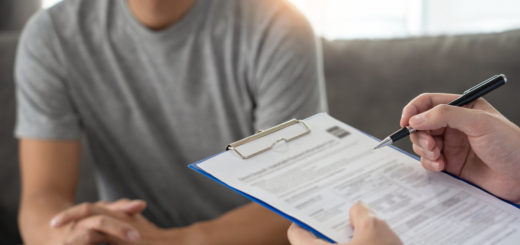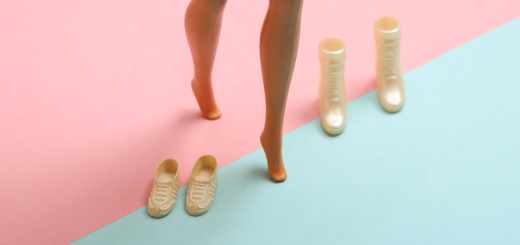How patient-practitioner relationship impacts the healing process
1When my son was little he used to freak out every time he fell down and scraped his knee. He would start screaming that he “needed a doctor”, that “this is bad, so bad”. The usual procedure that every parent follows in such a situation is to:
– Acknowledge the validity of the pain (did you trip and hurt your knee?);
– Demonstrate compassion for the experience (I am so sorry, this must really hurt);
– Comfort and ease the fears about the seriousness of the situation (I can see that there is no bleeding; that’s good or It will feel better soon);
– Give a solution with confidence (clean it up and put a band-aid on);
– Direct attention toward some pleasant experience.
In this situation the parent is not doing anything to heal the actual wound (other then protect it from infection), yet those steps change the child’s experience of pain and switch the brain from the red mode back to the green mode. Instead of perceiving pain as a sign of something scary and dangerous, he now perceives it as not dangerous and manageable. Before long the pain is forgotten and the brain had filed away that experience and established neuropathways for handling it. My son is older now and he’d had enough scrapes on him to know how to deal with them.
Research shows that things work in similar ways in therapeutic relationships as well. A treatment protocol that is similar to handling a child’s scraped knee works for adults with chronic pain as well, even if it does not involve any actual treatment. It helps to switch the brain from the red mode to green mode and experience pain relief as a result.
For example, in an interesting study about treating irritable bowel syndrome (IBS) with dummy acupuncture (investigating the placebo effect), researchers were interested in differentiating how much of the symptom improvement could be attributed to time passing alone, how much to the therapeutic ritual (the act of inserting pretend-needles) and how much to the patient-practitioner relationship (1). So they divided 262 people into the following three groups:
1. A wait list group that did not receive any treatment;
2. A “dummy treatment” group with very limited practitioner interaction;
3. A group that experienced a warm, empathetic and confident patient-practitioner relationship (in addition to “dummy treatment”).
“For group three the patient-practitioner relationship began at the initial visit (45 minutes’ duration) and was structured with respect to both content (four primary discussions) and style (five primary points).
Content included:
1. Questions concerning symptoms;
2. How irritable bowel syndrome related to relationships and lifestyle;
3. Possible non-gastrointestinal symptoms;
4. How the patient understood the “cause” and “meaning” of his or her condition.
The interviewer incorporated at least five primary behaviors including:
1. A warm, friendly manner;
2. Active listening (such as repeating the patient’s words, asking for clarifications);
3. Empathy (such as saying “I can understand how difficult IBS must be for you”);
4. 20 seconds of thoughtful silence while feeling the pulse or pondering the treatment plan;
5. Communication of confidence and positive expectation (“I have had much positive experience treating IBS and look forward to demonstrating that acupuncture is a valuable treatment in this trial”).
Only after completing this nine item agenda did the acupuncturist place the placebo needles and leave the participant in a quiet room for 20 minutes. On returning, the practitioner “removed” the placebo needles and exchanged a few words of encouragement.” (1)
After only three weeks the adequate relief was reported by 28% of subjects in group one (wait list), by 43% in group two (dummy treatment) and by 61% in group three (patient-practitioner interaction with dummy treatment). So a significant number of participants in group three experienced relief of symptoms, which is “comparable with the responder rate in clinical trials of drugs currently used in the treatment of irritable bowel syndrome” (1). Ponder that for a minute. Just being treated with attention, empathy and confidence by a practitioner has a similar perceived effect as taking a drug. And the practitioner didn’t even administer any real treatment!
Other studies on placebo effect have consistently shown that regardless of a specific therapeutic regimen, a medical encounter itself can elicit benefits and symptom reduction for the patient. And this study beautifully illustrates that “placebo effects produce statistically and clinically significant improvement and the patient-physician relationship is the most robust component of the placebo effect.”
Many yoga teachers intuitively adopt similar behaviors when they work with people with chronic pain. We can do that consciously, too. Next time we will discuss how we can follow best practices based on research concerning an optimal patient-practitioner relationship and identify content and behavior that are relevant to relationships between yoga teachers/therapists and their students. Here, too, the Panchamaya model can become an invaluable tool in both assessing the situation, establishing rapport with the student and shining light on the interconnectedness of various levels of the system. Learn about pain assessment in a yoga session >
 Resources
Resources
-
Components of placebo effect: randomised controlled trial in patients with irritable bowel syndrome (published in The British Medical Journal – BMJ)





















Thank you Olga I enjoy your work and I am learning from you. We need more teachers in Yoga with this approach. I hope one day to reach closer to you geografically and have with you a private workshop.
This is a great article.
I don’t know why this days in Yoga we tend to write long articles, lots of wording and information. I find shorter articles more attractive, in fact I stop to read them.
Thank you,
Namaste,